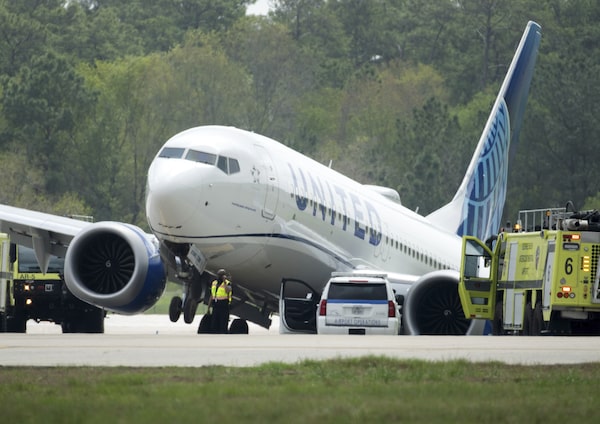
A United Airlines jet after leaving the taxiway on March 8 at George Bush Intercontinental Airport in Houston.Jason Fochtman/The Associated Press
The captain of a United Airlines UAL-Q jet said the brakes seemed less effective than normal and the plane and brake pedals shook violently just before the Boeing 737 Max slid off a taxiway in Houston last month.
According to a preliminary report released Thursday by the National Transportation Safety Board, the pilots were uncertain about ground conditions as they broke through clouds and saw the runway at George Bush Intercontinental Airport.
The captain said the runway looked dry, but the co-pilot thought it looked wet. Shortly after the plane touched the runway, the captain disabled the autobrakes, according to the report.
“He did not ‘slow too much initially’ because the runway appeared dry, he wanted to expedite their time on the runway, and because he preferred decelerating gradually for passenger comfort,” the NTSB said.
As the plane neared the end of the runway, the captain tried to steer on to a taxiway while pushing aggressively on the brake pedals, the NTSB said. That is when the plane went off the taxiway.
The plane was heavily damaged – the left main landing gear broke off – when it rolled into a grassy area at 25 mph (40 kph) and hit a concrete structure. None of the passengers or crew members were hurt, the NTSB said.
The preliminary report did not state a reason for the March 8 accident. The NTSB often takes a year or more to reach conclusions.
The accident was among a string of incidents involving United planes that led the chief executive to reassure passengers about the safety of his airline.